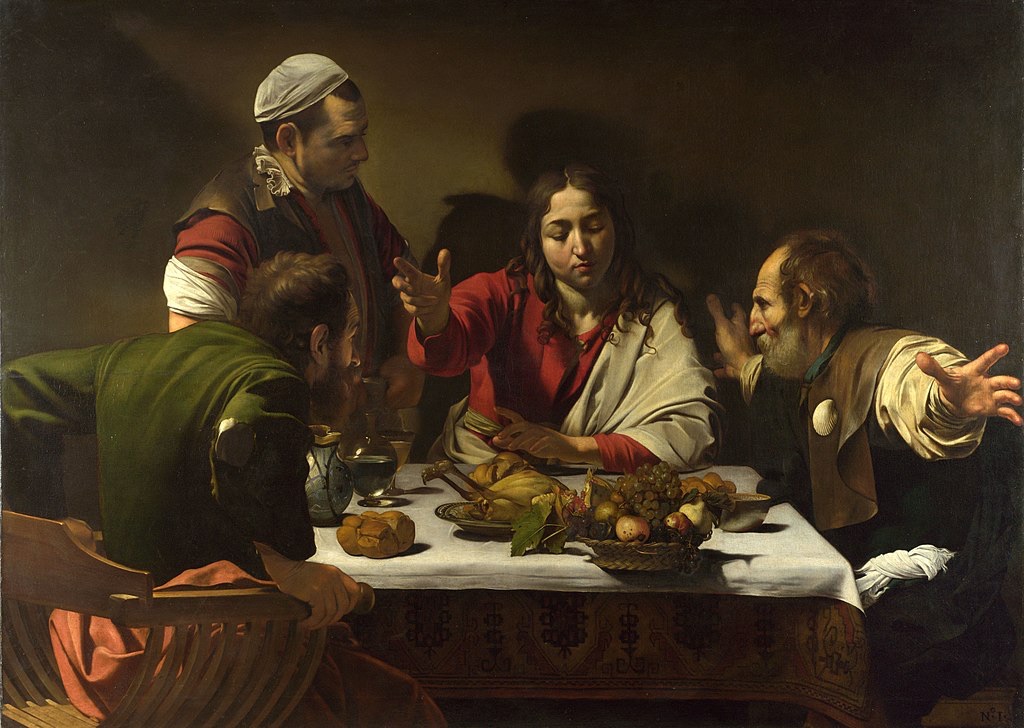|
“Now that same day two of them were going to a village called Emmaus, about seven miles from Jerusalem.” (Luke 24:13) This is the only time the village of Emmaus is mentioned in the Bible and yet it is the location of an important part of Jesus’ life and resurrection. “They” are two disciples, one who is called Cleopas, who did not believe Mary Magdalene, Joanna and Mary the mother of James when they revealed Jesus had risen from the dead. The two disciples were discussing the events of the past three days when they encountered a stranger on the road who accompanied them to Emmaus. When there, Cleopas and his friend urged this stranger to stay with them for the evening but whilst they were dining, the stranger took the bread, gave thanks and broke it before giving it to the pair. Reminded of the Last Supper, the disciples realised it was not a stranger but Jesus, who immediately disappeared from their sight.
So, where was Emmaus? We know from Luke Emmaus was about seven miles (or 60 stadia) from Jerusalem, however, its geographical location is not clear. There have been several suggestions throughout history but since the Bible did not provide any specific details about the landscape, no one can be completely certain about the location. It is thought the name Emmaus came from the Semitic word hammaor hammat, meaning “warm spring”, which may be a clue about the geography of the village. The majority of the suggested locations are around 60 stadia (an ancient Greek measurement) from Jerusalem; however, the most popular and oldest identification is around 160 stadia from the city. Emmaus Nikopolis (meaning Emmaus City of Victory) appears in the deuterocanonical bible in the first book of Maccabees under the name Emmaus during Judas of Maccabee’s wars against the Greeks. Being strategically close to Jerusalem, it became a regional administrative centre, however, was destroyed by the Romans in 4 BC. Although attempts were made to rebuild the village, an earthquake flattened it in 130 AD. During the early 3rd century AD, a city was erected on the foundations of Emmaus, which quickly became a famous city in Palestine. In the writings of Saint Eusebius of Vercelli (283-371), it is stated, “Emmaus, whence was Cleopas who is mentioned by the Evangelist Luke. Today it is Nicopolis, a famous city of Palestine.” This is one of the earliest claims that Emmaus Nikopolis is the location of the Biblical Emmaus and after the city became a bishopric, a church complex was built on the spot believed to be the place where the apparition of the risen Christ occurred. Due to the discrepancy between Luke’s claim that Emmaus was 60 stadia from Jerusalem and the reality that Emmaus Nikopolis was much further away, led people to doubt Saint Eusebius’ claim. In more recent years, several other places have been suggested, for example, the village of al-Qubeiba 65 stadia north of Jerusalem. Although there is no literature suggesting this is the location of Emmaus, a Roman fort that was discovered during the Crusades has been named Castellum Emmaus. Abu Ghosh, a town approximately 83 stadia (nine miles) from Jerusalem, was originally believed to be Emmaus by the Crusaders before they accepted Emmaus Nikopolis as the location. Both towns are accessed from the same road out of Jerusalem, however, there is little else to suggest Abu Ghosh is the true location. Between Abu Ghosh and Jerusalem is another potential location of the biblical Emmaus. Colonia, 36 stadia from Jerusalem, was a Palestinian Arab village that was destroyed by the Jewish military in 1948. Originally named Mozah, it is listed in Joshua 18 as one of the Benjamite cities. In the Jewish Talmud, Mozah was referred to as the place where people could celebrate Sukkot. Unlike Emmaus Nikopolis, which was identified as the Emmaus of Luke thousands of years ago, Mozah, or Motza as it temporarily became, was suggested as the location by William F. Birch (1840–1916) of the Palestinian Exploration Fund in 1881. When determining the true locations of biblical cities, scholars often look at the work of Josephus Flavius, however, in this instance, his writing has proved unhelpful. In his historiographical work Antiquities of the Jews, Josephus mentions a city named Emmaus in the context of the Maccabean Revolt, which has been identified as Emmaus Nikopolis. In his book The Jewish War, however, Josephus speaks of a place called Emmaus 60 stadia from Jerusalem, which corresponds with the Biblical description but paints Emmaus Nikopolis out of the picture. To make things even more confusing, historians are almost certain Josephus’ second Emmaus is Mozah, now Colonia, which is only 30 stadia from Jerusalem. It is unlikely that the true location of Emmaus will ever be proven and some scholars have put forward the idea that the account in Luke was merely symbolic. The passage has been likened to Jacob being visited by God in his dream while sleeping on a rock in the Old Testament. Others claim it mimics the story told by Livy (64 BC – 12 AD) in which a man named Proculus, which means “proclaimer” in archaic Latin meets a stranger on the road to Rome who turns out to be the recently killed Romulus, the mythical founder of Rome. When Proculus realised who the stranger is, Romulus ascended into heaven. In Luke’s Gospel, the two disciples have a similar experience but what connects the two stories further is the named disciple Cleopas, which means “proclaimer” in Greek. Whatever the truth, Emmaus is certainly a mystery!
0 Comments
Your comment will be posted after it is approved.
Leave a Reply. |
©Copyright
We are happy for you to use any material found here, however, please acknowledge the source: www.gantshillurc.co.uk AuthorRev'd Martin Wheadon Archives
June 2024
Categories
All
|

 RSS Feed
RSS Feed